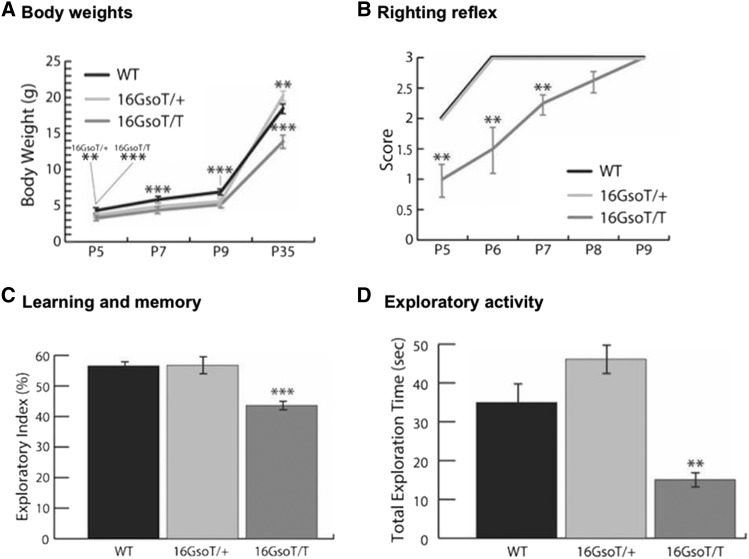Figure 3.
16GsoT/T mutants show lighter weight, developmental delay, impaired learning and memory, and reduced exploratory activity. In each case, 16GsoT/T and 16GsoT/+ were compared to WT age-matched controls. (A) Body weight was measured at P5, P7, P9 and P35 for each genotype (WT n = 9-17; 16GsoT/T n = 9-19; 16GsoT/+ n = 11-21 depending on age). Both 16GsoT/+ and 16GsoT/T weighed significantly less than WT at P5, P7, and P9. At P35, 16GsoT/T was lighter than WT, but 16GsoT/+ animals weighed slightly more than WT. (B) Developmental delay: The 16GsoT/T mice (n = 14) showed delayed development of the righting reflex, while there was no difference between WT (n = 14) and 16GsoT/+ (n = 14) males. (C) Novel object recognition test revealed that 16GsoT/T males (n = 8) showed impaired learning and memory, while WT (n = 8) and 16Gs T/+ animals (n = 9) have normal learning and memory. (D) Exploratory activity was determined in the training session of the NOR test, and showed significantly lower levels of object exploration by 16GsoT/T mice. The number of animals tested in this experiment are identical to that for (C). P-values determined with the t-Test, **P < 0.01; ***P < 0.001.

